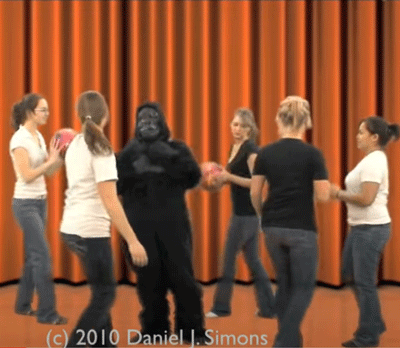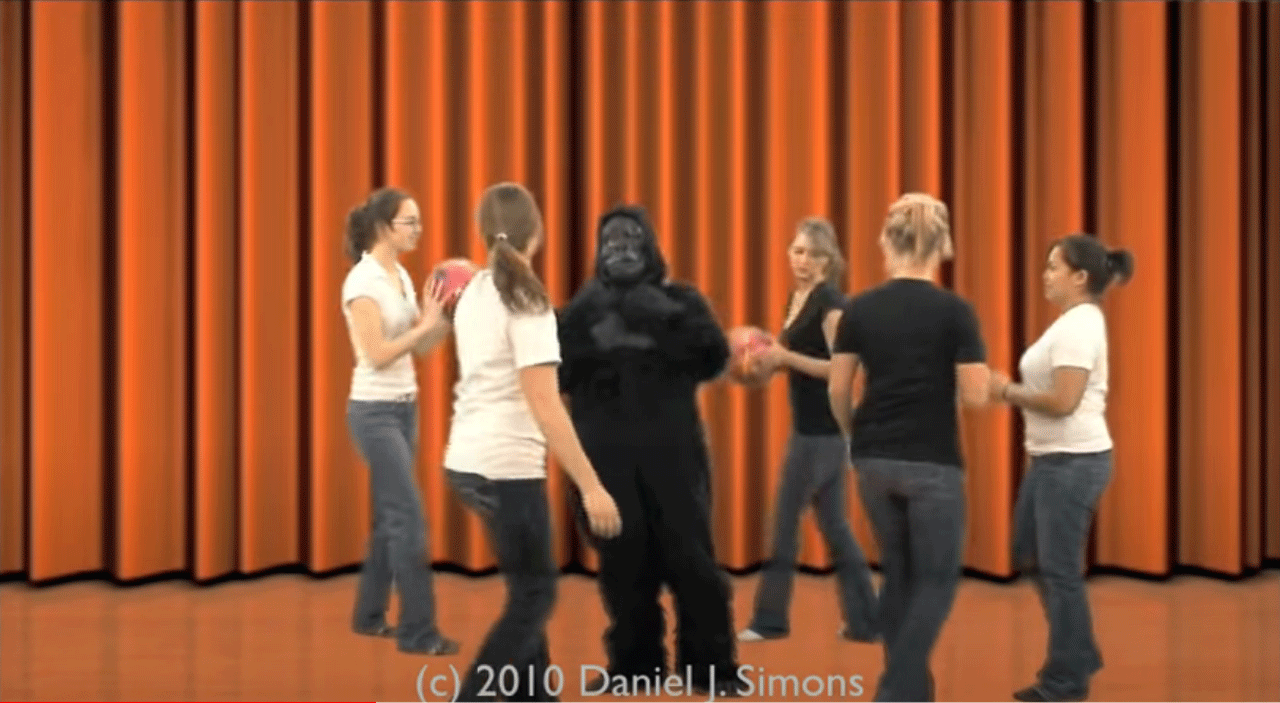Inattention Bias
In their book Thinking, Fast and Slow, psychologists Daniel Kahneman and Amos Tversky provide insights into understanding decision-making and consumer behavior. One of the authors’ most enlightening experiments, the “Invisible Gorilla,” dramatically illustrates the power each of us has to focus, often ignoring other facts.
In this experiment, people were asked to watch a video of two teams playing basketball – one with white shirts versus one with black shirts. The viewers were to count the number of passes made by members of the white team while ignoring the players passes who were wearing black. The task was mind absorbing. and participants were forced to use great focus on the assignment.
Halfway through the video, a person in a gorilla costume walked on-screen, thumped his chest a few times, and then exited. (Watch the video.)
When questioned later, 50 percent of the people viewing the video never noticed the gorilla. Not only did they not notice the gorilla; they also refused to believe that they had missed seeing it.
A psychologist at Harvard medical school took this study one step further. He took a CT chest scan and superimposed a match-box size image of a gorilla into some of the scans. He then asked very experienced radiologists skilled in spotting tumors to view the scan and state whether they spotted anything out of the ordinary. More than 80 percent of these radiologists missed the gorilla, "... despite the fact that the eye-tracking monitor showed that many of the radiologists who did not see the gorilla had actually looked right at it."
These "Invisible Gorilla" experiments explain why attention plays such a key role in ultimate resolution. If mediation is to be successful, participants should consider all available information and avoid becoming hyper-focused on their position and certain aspects of their case.
Being in an environment where one can take a step back, consider all the information available, and think creatively will lead to resolution. Conducting your mediation at a comfortable and neutral location increases the likelihood that the attorneys and the parties can properly concentrate on alternate or innovative ways to resolve their conflict and avoid “losing sight of the forest for the trees."
Where you decide to mediate can help you avoid behavioral biases. Although a comfortable facility will not guarantee a successful resolution, there is little doubt that mediating with the right neutral, at the correct facility, greatly increases the chances of a settlement – and you seeing the gorilla in the room!
Schedule your next ADR session via our convenient online calendar, or call Carol Waldrop at 855-754-8807.



